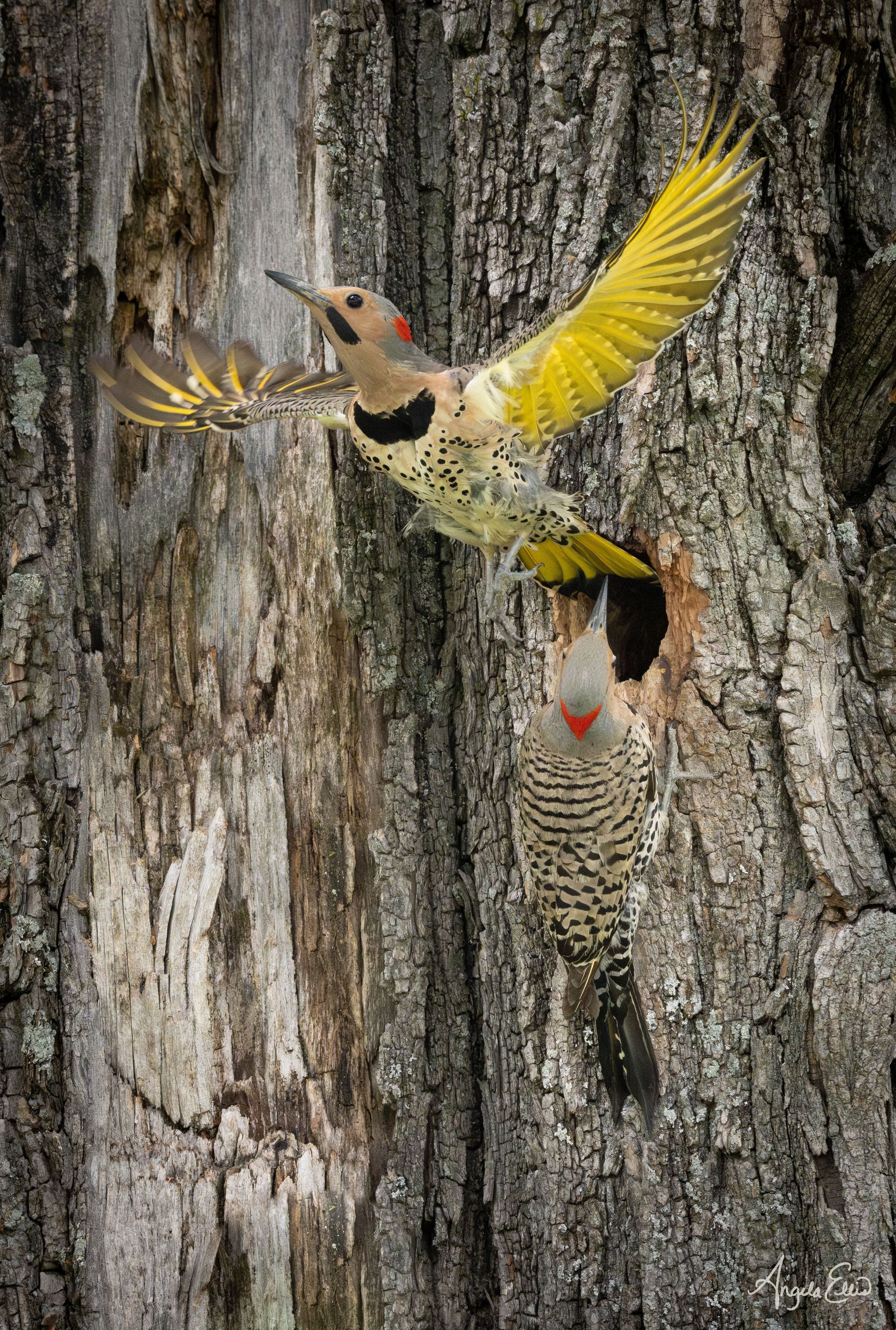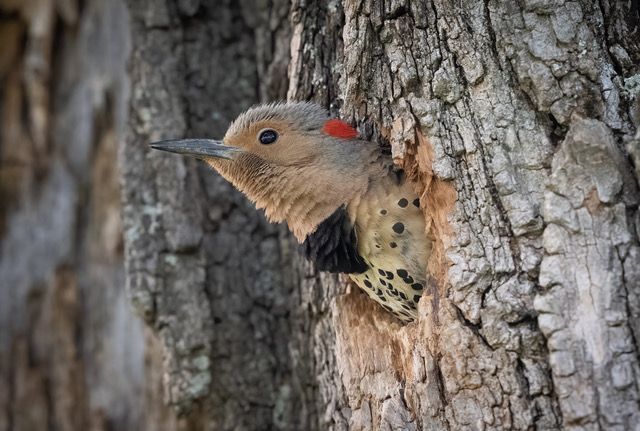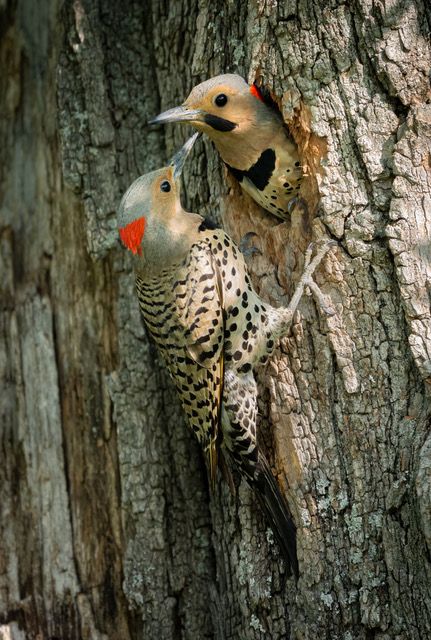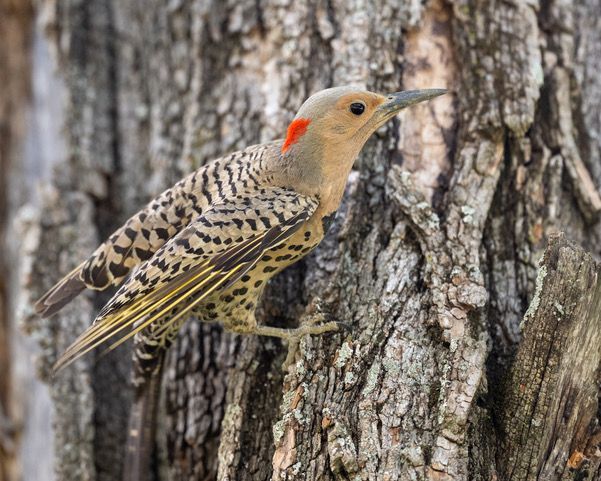Angela Wilkins Ellis documents a Northern Flicker Pair at Josephine Sculpture Park from May 21 to June 23, 2023

Written and photographed by Angela Wilkins Ellis
I was enjoying a lazy late May Sunday afternoon on my back porch but feeling a little guilty
for not getting out and making use of my new camera lens. I motivated myself to grab my
camera and search for some local wildlife photography opportunities.
I knew that Josephine Sculpture Park had a bluebird trail and I was hoping to find some
bluebirds or tree swallows to photograph. We first explored the west side of the park with no
success. We were crossing the driveway to the explore the east side of the park when my
husband saw a Northern Flicker land in a tree. We spent a few minutes watching him and
saw him fly into a cavity in the tree. We spent the rest of the evening watching Mr. Flicker.
The males have a “mustache” on both sides of their beaks below their eyes. I was so
excited and knew I would spend the next few weeks on Flicker watch.
The yellow shafted Northern Flicker is a medium sized woodpecker with bright yellow on the
underside of the wings and tail that can be seen during flight. They are found in semi-open
areas. Unlike other woodpeckers, the Northern Flicker is often seen on the ground digging
into the soil for ants, grubs and other insects. They also eat small fruits and berries. Like
other woodpeckers, they nest in cavities spending 1-2 weeks preparing a nest then
incubating their eggs for 11-12 days. They feed their young by regurgitation and the chicks
fledge about 4 weeks after hatching.
I could not wait to get back to JSP the next day after work. After waiting a few minutes I
was rewarded by meeting Mrs. Flicker. She was very shy but equally as beautiful as Mr. The
only difference in her appearance is the absence of the mustache. I spent the next 3 weeks
watching this pair come and go taking care of their family. I even got to see and photograph
them trading places. The nest was never left unattended by one of the parents for the first
couple of weeks. I had no idea if there were eggs or young chicks in the nest. I so wanted
to see what was going on inside of that tree!

I spent the next couple of weeks going back every two to three days. There was lots of
waiting, watching and wondering. It was usually about 30-45 minutes before the male and
female would trade places.

I also got a few chances to capture some in flight action…

… and lots of close up opportunities.
Finally, evidence of live chicks when I caught mom changing a diaper (removing a fecal sac
from the nest). And also witnessed dad doing his part!
By now, mom and dad were both spending more and more time away from the nest at the
same time. I could see them bobbing their heads into the cavity feeding the chicks. They
both worked so hard!

Tuesday June 13 was a very windy day. I went to check on the flicker family and saw dad fly
into the nest. I did not stay long as the conditions were not conducive to photography. I had
not yet seen or heard chicks and figured I had a few more days before I might start seeing
them. I wondered how many there were. I read that the chicks would become very noisy and
demanding as they got older. I made it back to the park two days later and watched and
waited for two hours. I was hoping I just lost focus and missed the parents coming and
going. It was the same the next night.
Sadly, that windy Tuesday was the last time I saw one of the flicker parents. I so wanted to
see and photograph those chicks with their heads poking out of the hole in that old tree. I
really hope I just missed them fledging. So many unanswered questions. This was such an
incredible experience! I will be back next spring in search of another flicker nest now that I
know Josephine Sculpture Park has such wonderful habitat for these amazing birds.

















